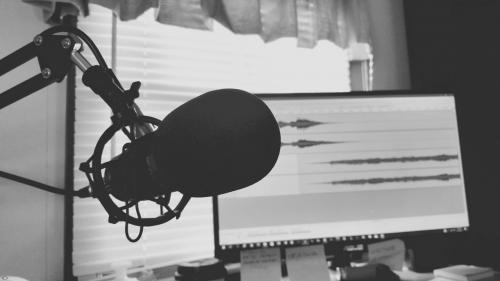3-Step Process to Build a Successful Podcast

If you’ve been working online for any amount of time then
you’ve likely heard of podcasts. Right now, they’re having a moment. Over half
the American population is aware of what a podcast is and in 2018, marketers
spent over $400 million on advertising. That’s a 50% increase over the year
before.
Needless to say, there’s a lot of potential here.
Many people will get excited, start a podcast, and dream of
the millions they can make as a result. Unfortunately, those are the people
most likely to fail because there needs to be a method to the madness.
In this short article, you’ll learn the three key steps to
building a successful podcast.
Hosting & Equipment
Before a new podcast can yield a good ROI, it’s important to
invest in it. Now, that doesn’t mean you have to invest thousands of dollars.
In reality, roughly $300 will get you a professional setup. That involves
choosing the right podcast
hosting platform, a good mic, and solid headphones.
You can’t go wrong with a Blue Yeti mic which are widely
available on Amazon. It helps you cancel out the ambient noise and you can even
choose the direction through which it’ll pick up sound. It’s just over a
hundred dollars and is incredibly durable. I’ve dropped mine countless times
and it’s still going strong.
If you can’t afford a Blue Yeti then a Blue Snowball mic is
still a good option. It’s not as clear as the Blue Yeti but should meet your
needs in the short term.
After you’ve got a good mic, the next step is to get
headphones. Why do you need headphones? So you can hear what you’re recording.
The worst feeling is finishing a recording only to discover you were too far
away, there’s interference, or something else.
You’ll want to get what is known as closed-back headphones.
They seal the sound coming through the headphones so your mic doesn’t pick it
up as an echo. A good option is the Sony MDR7506 They’re less than $100.
The final piece of the puzzle is your audio recording and
editing software. You can get a good one named Audacity which is free and open-sourced. You can record directly into the software, add your intro music, and
otherwise edit your audio files until they’re perfect.
Choosing a podcast niche
This may be the single most important consideration.
Why is it so important?
Because people need to know what to expect from you. You can’t
talk about gardening today and affiliate marketing tomorrow and hope people will
pay attention to what you have to say. Since they don’t know what to expect,
they won’t visit your show landing page as often.
Instead, focus on a specific niche within your industry. For
example, if you’re selling clothes, you may focus on men’s streetwear. If you’re
selling software email marketing software, you may focus on email marketing
best practices combined with interviews.
The choice is yours but just make it makes sense for the
audience you’re trying to reach. Once you’ve settled on a niche, choose simple
landing page software and create a page that advertises your show while
encouraging visitors to subscribe.
Producing great content consistently
The final step is to go out there and create the content
that your listeners will consume. Take the time to practice. If you’re doing
interviews then learn how to interview people instead of just doing it on the
fly.
If you’re focused on talking alone or with a co-host then it’s
important to figure out how to make your episodes engaging. Hiring a coach
could be a great investment because it’ll save you a lot of time when compared
to figuring it out on your own.
Creating great content isn’t enough though. You have to
ensure you’re producing that great content on schedule. People only sign up for
or interact with a podcast that is produced regularly. It’s disappointing when
they’re expecting a new episode from you and then don’t get it.
What’s the best frequency? Whatever you can keep up with.
If you can manage 2 episodes a week forever, go for it. If
you can only manage 2 episodes a month then go for that as well. You’ll still
get the results you’re looking for.
John Lee Dumas from EOF.com
produces an episode every day and has been doing it for years. NPR Invisibilia
produces a few episodes for a season then goes on break for a few months. They’re
still incredibly popular.
Conclusion
A podcast is a great way to grow your brand and get the word
out there about your products and services. It requires a bit more effort than
blogging but it’s easier to get noticed because there’s not as much
competition.
Follow the 3-step process outlined here and you’ll start to
reap the rewards.
Post Your Ad Here
Comments